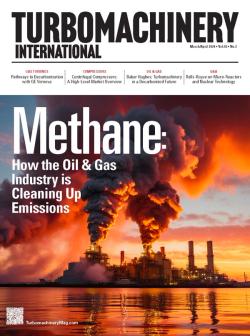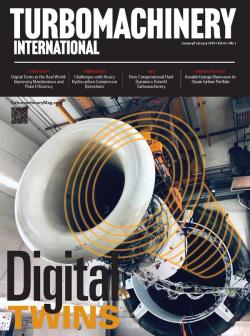
OR WAIT null SECS
© 2024 MJH Life Sciences™ and Turbomachinery Magazine. All rights reserved.
Myth Busters: A GOOD FOUNDATION IS HARD TO BUILD
Most of us, when we went to college many years ago, took a freshman or sophomore level engineering undergraduate class in statics and dynamics. During these basic course curricula, we learned all about real-life application of Newton's laws, free body diagrams, and the sum of forces to achieve static and dynamic equilibrium.
When designing, for example, a compressor skid, it is important that engineers continue to apply the principals taught in these classes. Otherwise, the consequences of poor static and dynamic design analysis may include cracks in the foundation, thermal expansion on pipes, high static stress due to misaligned flanges, shacking pipes and skids, complete train movement and bending, and misaligned driver and driven equipment.
Basically, a skid and foundation isolates the rotating and reciprocating machinery from any ground movements. It provides a level and rigid surface for machinery mounting. Skids and foundations have been around at least since 1780 when the steam engine was invented. Although modern machines run much faster than old steam engines, and therefore produce higher frequency excitations, the design requirements for a machinery support structure have not changed.
Specifically, they must provide a solid structure for level alignment of the machine that isolates static, and dynamic machinery forces and moments from the ground, and disallows relative movement between all mounted components. This is achieved through simple mechanical inertia, stiffness and dampening of the skid, sub-skid, and base.
After hundreds of years of experience with machinery skids, there are some basic engineering rules of thumb for their design. There are also comprehensive industry guidelines and specifications on foundation and skid design published by the Gas Machinery Research Council (GMRC), the American Petroleum Institute (API), and the American Society of Mechanical Engineers (ASME).
Additionally, all machinery manufacturers provide complete documentation of the minimum foundation requirements for equipment. These should be strictly adhered to. There are many companies that know this and have expertise in designing a proper machinery base. However, others do not seem to be able to engineer a foundation or skid, as shown in the hundreds of base support-related machinery failures reported every year.
When the foundation fails, equipment starts to shake and high cycle fatigue issues are common on the machine, piping, and structural supports. Even worse, a poor skid design allows misalignment between machinery train components, which results in excessive forces on shafts. This often causes catastrophic failures. Usually a good skid can be designed from basic statics and dynamics principles.
Finite element analysis (FEA) can be helpful to optimize a skid and avoid over-design, especially for high-speed machinery support structures. Also, when multiple machines operating at difference speeds are mounted on a complex support structure, FEA can be used to avoid unexpected harmonics and excitation coincident frequencies.
Obviously, the type, complexity, size, weight, and stiffness-damping characteristics of the skid or foundation are primarily a function of the level of vibration produced, and its anchoring to the ground or sub-surface. Centrifugal compressors and gas turbines (GTs) usually have much lower vibrations, so lighter foundations can be used. Reciprocating compressors and engines require more rigid and sturdy foundations. But it is not simply a question of the driver and driven equipment excitation dynamics and their proper absorption. The level of allowable foundation strain, rotor-interface misalignment, and case bending are critical design parameters.
For many low-horsepower reciprocating compressors, a welded rectangular I-beam style skid with sufficient cross-stiffening beams is adequate, even when mounted on a gravel pad. However, a growing number of low horsepower compressor packages have been found to experience high vibration due to degradation of gravel pads. This has led to uneven settlement over time. High skid vibration, in turn, leads to excitation of mechanical responses. These responses would normally not be excited. But they can lead to dangerous levels of vibration and equipment failure.
A low horsepower unit may perform adequately on a smaller foundation. However, the assumption that a gravel pad is sufficient for all low-horsepower packages may lead to future problems. Similarly, one would not want to take this simple approach on a 100 MW gas turbine-driven multi-body compressor skid. Here, a careful skid and foundation design would be more appropriate based on the machinery train’s actual static and dynamic loads as well a detailed soil analysis. Using an industry standard such as API 686 will ensure the foundation design will resist all dynamic and static operation loads. Although it may not be necessary to always dig out the old undergrad textbooks, engineers must understand these fundamentals and should apply sound engineering principles to their design.
Fundamental concepts cannot be ignored, such as how static loads are applied to an appropriate machinery support structure or vibrations, their natural frequencies, and the system's dynamic responses. There are plenty of experts and companies that can help with this. Also, it is not good practice (nor is it necessarily safe) to use heavy machinery to pull flanges and pipes into alignment just to get the bolt holes to line up.



